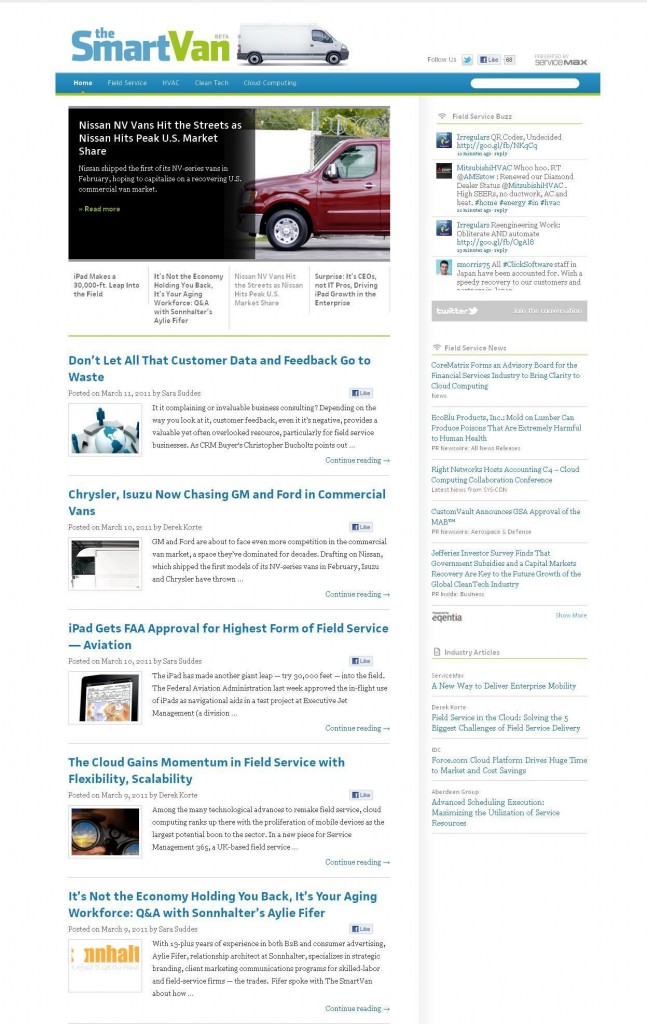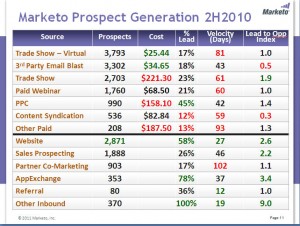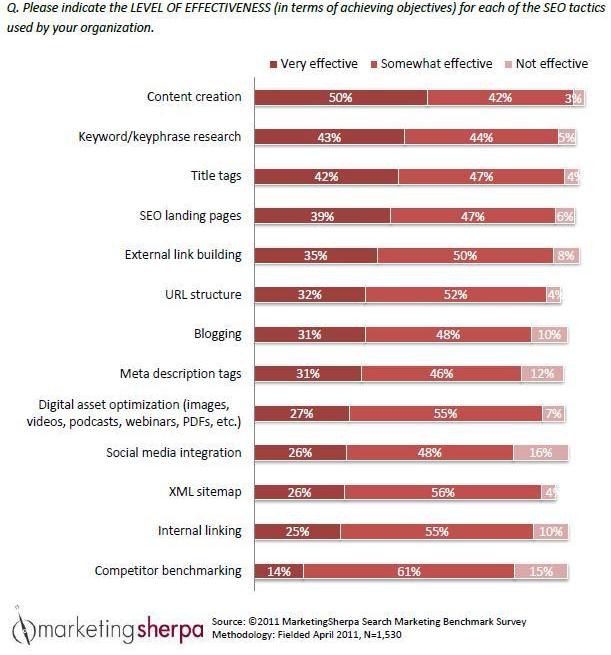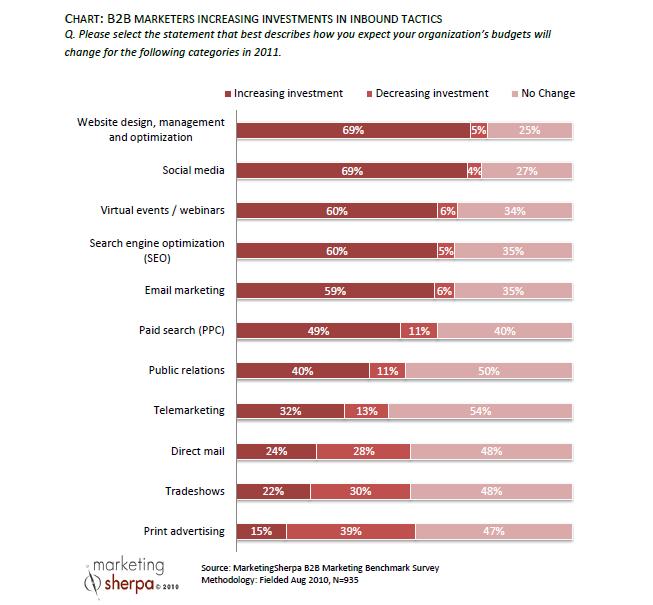When I was on the phone with Stacey Epstein, VP of Marketing, ServiceMax, I remembered some advice I heard when researching our first article for MarketingSherpa’s Inbound Marketing newsletter.
I spoke with a lot of great experts for that piece. On content marketing, I spoke with Joe Pulizzi, Founder of the Content Marketing Institute. He mentioned that marketers should avoid publishing too many types of content and focus on about three that fit their strategies.
“But you have to do one really well,” he said. “You have to do an awesome blog or the best e-book program that’s ever been run; focus on what you can do really well, better than anyone else in your industry.”
That is exactly what Epstein and her team are striving for with SmartVan. ServiceMax launched the site in January as a content portal for the field-service industry (which is served by ServiceMax), to help companies that send technicians out of the office for service, installation, and repairs.
“We noticed there was a complete lack of resources for these people,” Epstein says. “The site is meant to be a place for field-service professionals to educate themselves.”
Site traffic has grown faster than anticipated. After a just a few months, SmartVan holds the top Google rank for the phrase “field service news” and about 15% of its traffic comes from natural search.
“It’s great for us to be ranked so high so quickly,” Epstein says. “I think it’s a testament to how little content there is out there. It helps validate that we’re helping to serve this huge need.”
Weave the brand into the content
Epstein has big plans for SmartVan and hopes to continually grow its traffic for several years. One key principle is to avoid selling ServiceMax too directly, she says. Otherwise visitors could write-off the site as a marketing channel rather than a trusted resource for industry news.
“We’re really trying to create a resource for field-service people that doesn’t exist today… We feel that we’ll have a lot more success in getting people interested in the site and wanting to be on the site if we don’t try to sell them.”
The team does plan to incorporate ServiceMax into the site, but will do so carefully, and mostly around content. For example, a ServiceMax webinar on how the iPhone is changing the industry will be mentioned on SmartVan.
Also, a company blog written by ServiceMax executives will soon be hosted on the portal. Epstein also plans to offer an email newsletter to help build a database.
“We’ll never have a homepage that says ‘SmartVan is brought to you by ServiceMax. Go see us now and buy from us,’ etcetera. That’s not our intent.”
Content creation: easier than thought
A website that’s designed as the go-to resource for a specific topic cannot afford to have stale content. When planning SmartVan’s strategy, Epstein wondered how her team would keep up with the demands of a daily publishing schedule.
But that challenge has been easier than anticipated. The team has partnered with LaunchSquad to help manage the site and has pooled content from a variety of sources.
“We found some great contributing writers who were super interested to join us. We certainly contribute content from ServiceMax. We have a couple of guys from LaunchSquad contributing, and we aggregate content from other sources,” Epstein says.
“Between all those different people, I’m actually blown away by the amount of content. We’re serving up multiple pieces of fresh content every day.”
Changes and hurdles on the horizon
Epstein has promoted SmartVan with a press release, an email to ServiceMax’s house list, and mentions in Facebook and Twitter. She’s hoping the site will continue to grow through word-of-mouth and natural search.
A key challenge to growth, she says, will be connecting the field-service audience and encouraging visitors to interact. SmartVan will soon offer social features in hopes of fostering engagement, but this will be a pioneering effort for the industry.
“Right now, this is not necessarily a super tight-knit community,” Epstein says. “Part of that is because there isn’t a lot that brings them together. There aren’t a lot of trade shows, and there aren’t a lot of online forums.”
But that challenge is also a huge opportunity. SmartVan could become a powerful marketing channel for ServiceMax if it continues to grow at its current pace.
“If we can succeed in building this community and creating a place where all these people can go, interact and get educated, it will by far outpace any other traditional marketing strategy that we ever could have done and at a much, much lower cost and with fewer resources.”
Related resources
MarkteingSherpa’s free newsletters
Inbound Marketing: How to pull-in customers without pushing ads
Content Marketing: How to get your subject matter experts on your corporate blog
Content Marketing: Should you lure a journalist over to the ‘dark side?’
Email Marketing: Maybe it really is an inbound tactic…
Members Library – Content Marketing: Microsoft crowdsources content ideas with a viral contest for new Windows Phone 7 platform















